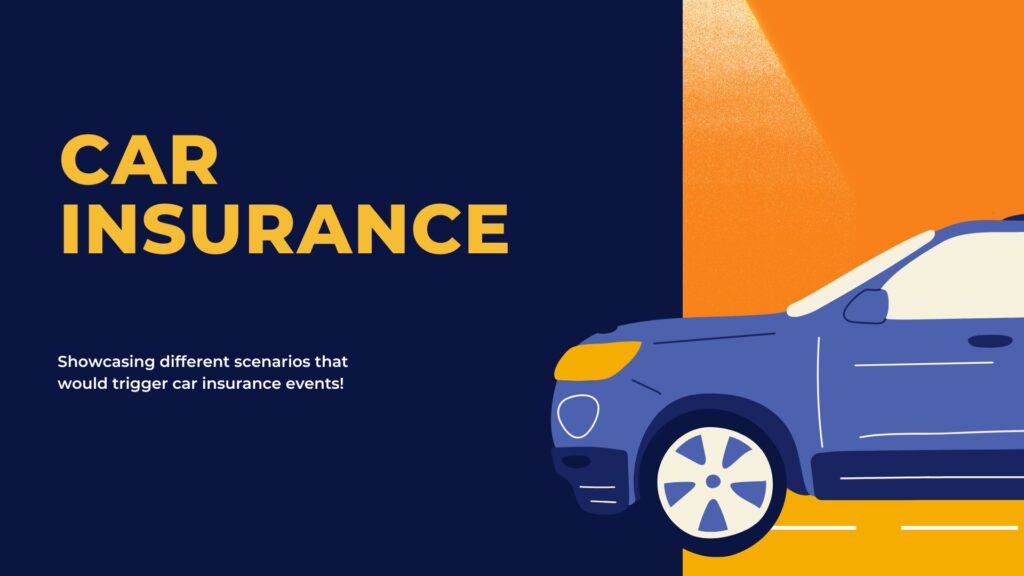Navigating the world of car insurance can be overwhelming, especially for teens and new drivers in the US. The process involves understanding various policies, coverage options, and the myriad factors that influence insurance premiums. This article aims to demystify car insurance for new drivers, providing detailed insights into how it works, what to consider, and how to find the best deals.
The Importance of Car Insurance
Car insurance is essential for several reasons. Firstly, it is a legal requirement in almost every state. Driving without insurance can lead to severe penalties, including fines, license suspension, and even jail time. Secondly, car insurance provides financial protection in case of an accident. It can cover medical expenses, repair costs, and liability for damages caused to others.
For teens and new drivers, who statistically face higher risks on the road, having robust car insurance is even more critical. According to the Centers for Disease Control and Prevention (CDC), teens aged 16-19 are nearly three times more likely than drivers aged 20 and older to be involved in a fatal crash.
Factors Affecting Car Insurance Rates for Teens and New Drivers
- Age and Experience: Insurers consider young and inexperienced drivers as high-risk. This often results in higher premiums.
- Type of Car: The make, model, and year of the car can significantly influence insurance costs. High-performance and expensive cars usually cost more to insure.
- Location: Where the driver lives impacts insurance rates. Urban areas with higher traffic density and crime rates typically attract higher premiums.
- Driving Record: A clean driving history can help reduce insurance costs. Conversely, any history of violations or accidents will increase premiums.
- Grades: Many insurers offer discounts for good students. Maintaining a high GPA can be beneficial.
- Coverage Options: The extent of coverage chosen (liability, comprehensive, collision, etc.) will affect the premium amount.
Types of Car Insurance Coverage
- Liability Insurance: The most basic type required by law in most states. It covers bodily injury and property damage to others if the teen driver is at fault in an accident.
- Collision Insurance: Covers the cost of repairing or replacing the driver’s car following an accident, regardless of who is at fault.
- Comprehensive Insurance: Covers non-collision-related damages, such as theft, vandalism, and natural disasters.
- Uninsured/Underinsured Motorist Coverage: Protects against damages caused by drivers without sufficient insurance.
- Personal Injury Protection (PIP): Covers medical expenses for the driver and passengers, regardless of fault.
Tips for Reducing Car Insurance Costs for Teens

- Choose the Right Car: Opting for a safe, reliable, and moderately priced vehicle can lower insurance costs.
- Driver Education Courses: Completing a recognized driving course can qualify for discounts.
- Bundle Policies: Insuring multiple vehicles or combining car insurance with home insurance can result in discounts.
- Higher Deductibles: Increasing the deductible can reduce premium costs, though it means paying more out-of-pocket in case of a claim.
- Good Student Discount: Many insurers offer discounts for students who maintain good grades.
- Install Safety Features: Adding features like anti-theft devices and advanced driver assistance systems can reduce premiums.
Comparing Car Insurance Providers
Shopping around and comparing quotes from multiple insurers is crucial to finding the best rates. Factors to consider when comparing providers include:
- Reputation and Customer Service: Opt for insurers with positive reviews and high customer satisfaction ratings.
- Financial Stability: Ensure the company is financially stable and capable of paying out claims.
- Discounts and Incentives: Look for providers that offer discounts specifically tailored to young drivers.
- Coverage Options: Ensure the provider offers the necessary coverage options to meet your needs.
Some well-known car insurance providers in the US that cater to teens and new drivers include State Farm, GEICO, Progressive, Allstate, and Nationwide.
State-Specific Requirements
Car insurance requirements vary by state. Here’s a brief overview of some state-specific considerations:
- California: In California, the minimum liability insurance coverage for private passenger vehicles is 15,000𝑓𝑜𝑟𝑖𝑛𝑗𝑢𝑟𝑦/𝑑𝑒𝑎𝑡ℎ𝑡𝑜𝑜𝑛𝑒𝑝𝑒𝑟𝑠𝑜𝑛,15,000forinjury/deathtooneperson,30,000 for injury/death to more than one person, and $5,000 for property damage.
- Texas: Texas requires a minimum of 30,000𝑝𝑒𝑟𝑖𝑛𝑗𝑢𝑟𝑒𝑑𝑝𝑒𝑟𝑠𝑜𝑛,𝑢𝑝𝑡𝑜30,000perinjuredperson,upto60,000 per accident, and $25,000 for property damage.
- Florida: Florida is a no-fault state, requiring drivers to carry Personal Injury Protection (PIP) and a minimum of $10,000 for both PIP and property damage liability.
- New York: New York also follows no-fault insurance laws. The minimum requirement includes 25,000𝑓𝑜𝑟𝑏𝑜𝑑𝑖𝑙𝑦𝑖𝑛𝑗𝑢𝑟𝑦𝑡𝑜𝑜𝑛𝑒𝑝𝑒𝑟𝑠𝑜𝑛,25,000forbodilyinjurytooneperson,50,000 for bodily injury to all persons, and $10,000 for property damage.
Legal Ramifications of Driving Without Insurance
Driving without car insurance can have severe legal consequences, including:
- Fines and Penalties: Uninsured drivers can face hefty fines and penalties.
- License Suspension: The driver’s license and vehicle registration can be suspended until they provide proof of insurance.
- Jail Time: Repeated offenses can lead to imprisonment.
- Financial Liability: Uninsured drivers can be held personally liable for covering all damages and medical costs in the event of an accident.
The Claims Process
Understanding the claims process is crucial for new drivers. Here are the steps involved:
- Report the Incident: Notify the insurance company promptly, providing all necessary details about the accident.
- Document the Scene: Collect evidence from the scene, including photos, witness statements, and police reports.
- Claim Assessment: An adjuster will assess the damage and determine the claim’s value.
- Repairs and Compensation: Based on the policy, the insurer will cover repair costs or issue a compensation check.
The Role of Parents in Insuring Teen Drivers
Parents play a vital role in the insurance process for teen drivers. Here are some important considerations:
- Adding Teens to Existing Policies: It is often more cost-effective to add a teen driver to an existing family policy than to purchase a separate policy.
- Monitoring Driving Habits: Using telematics devices to monitor driving habits can provide discounts and improve safety.
- Discussing Safety and Responsibility: Educating teens about the importance of safe driving and the financial implications of accidents can instill a sense of responsibility.
Technological Innovations in Car Insurance

The car insurance industry is evolving, with technological innovations making significant impacts. Here’s how:
- Telematics and Usage-Based Insurance (UBI): These programs use devices to monitor driving behavior and offer personalized premiums based on actual driving data.
- Mobile Apps: Many insurers provide mobile apps for claims reporting, policy management, and accessing digital ID cards.
- AI and Big Data: Advanced data analytics and AI are used to accurately assess risk and streamline claims processing.
Preparing for the Inevitable: What to Do After an Accident
It’s crucial for new drivers to know what steps to take immediately after an accident:
- Ensure Safety First: Check for injuries and move to a safe location if possible.
- Contact the Authorities: Call the police and report the accident.
- Document the Accident: Take photos and gather information from other parties involved, including insurance details.
- Notify the Insurance Company: Report the incident to the insurer and follow their instructions for filing a claim.
The Future of Car Insurance for Young Drivers
The future of car insurance, especially for young drivers, looks promising with advancements in technology and shifting market dynamics. Here are some trends to watch out for:
- Increased Adoption of Telematics: As telematics becomes more widespread, insurance companies can offer more accurate and individualized rates based on actual driving behavior.
- Focus on Driver Education and Safety Programs: Insurance companies may partner with schools and other organizations to provide enhanced driver education and safety programs, potentially reducing rates for participants.
- Integration with Autonomous Vehicles: As autonomous vehicle technology advances, car insurance models will evolve to reflect these changes, with a focus on the risks associated with partially and fully autonomous driving.
- Enhanced Data Privacy and Security Measures: With increased use of data analytics and telematics, there will be a greater emphasis on ensuring data privacy and security.
- Customized Insurance Packages: The demand for more flexible and customized insurance packages will continue to grow, allowing young drivers to choose coverage that best suits their needs and budget.
Conclusion
Navigating car insurance as a teen or new driver in the US is a complex but manageable task with the right information and approach. Understanding the different types of coverage, the factors that influence premiums, and the importance of comparing providers can go a long way in securing the best possible insurance rates.
In addition to financial considerations, promoting safe driving habits is paramount. Parents and guardians play a crucial role in guiding their young drivers toward responsible behavior on the road, which, in turn, can positively impact insurance costs. With technological advancements and innovative insurance solutions continually emerging, the future holds promising prospects for making car insurance more personalized, affordable, and aligned with individual driving behaviors.
The Checkpoints of Safe Driving for Young Drivers

While this guide primarily focuses on the financial aspects of car insurance, a crucial underlying theme is the safety of young drivers. Here are some checkpoints that every new driver should consider:
- Understand Traffic Laws: Always abide by traffic laws and signs. Breaking these laws not only endangers lives but also impacts insurance premiums negatively.
- Avoid Distractions: Texting, eating, or any form of distracted driving significantly increases the risk of accidents.
- Drive Defensively: Always stay alert, anticipate other drivers’ actions, and maintain a safe following distance.
- Know Your Car: Familiarize yourself with the vehicle’s controls and features. This includes understanding how safety features like ABS and airbags work.
- Regular Maintenance: Keep the vehicle in good condition with regular maintenance checks to prevent breakdowns and accidents.
Parent’s Role in Ensuring Safety and Compliance
- Set Clear Rules: Establish firm rules regarding car usage, curfews, and the number of passengers allowed in the car when a teen is driving.
- Enroll in Safety Programs: Encourage participation in driver safety programs, which can instill better driving habits and provide insurance discounts.
- Regular Check-Ins: Regularly discuss driving experiences, challenges, and lessons learned with the young driver to reinforce good behaviors and correct any bad habits.
- Monitor and Mentor: Utilize telematics tools not only for insurance purposes but also as a mentoring tool to review and discuss driving patterns and areas of improvement.
In summary, securing car insurance for teens and new drivers in the US is a multifaceted process that requires careful consideration of various factors. By understanding the principles of how car insurance works and implementing strategies to foster safe driving, young drivers and their families can better navigate this essential aspect of car ownership. Through continued education, technological integration, and proactive measures, the journey of young drivers on the road can be made safer and more insurance-efficient for all.